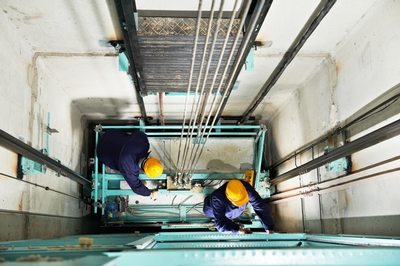The Science Behind Elevator Safety: How Elevator Braking Systems Work
Related Attorney: Timothy E. Dinan
November 29, 2023
Elevators have become an integral part of modern life, allowing us to move effortlessly between floors in tall buildings. While we may not often think about it, elevator safety is not something anyone should take for granted. Elevators are very complicated machines that require frequent maintenance and inspection to ensure they don’t malfunction and injure or kill their passengers. A critical component of elevator safety is the elevator braking system.
The Basics of Elevator Braking Systems:
Elevator braking systems are designed to ensure smooth and secure rides for passengers. They are supposed to stop the elevator smoothly, and without causing injury to the elevators unsuspecting occupants. They primarily consist of three key components:
1. Elevator Motor: Elevators are equipped with powerful motors that control the movement of the elevator car. These motors are responsible for lifting and lowering the car within the shaft. If the elevator motors are not maintained, the elevator can move faster than was designed and lead to potentially catastrophic failure of the elevator system.
2. Counterweights: Most elevators feature counterweights that balance the load in the car. These weights reduce the overall energy required to move the elevator, making it more efficient.
3. Brakes: Elevator brakes are the crucial safety component. They work to stop the elevator in emergency situations, and are supposed to prevent the elevator from falling or moving uncontrollably. These brakes require frequent maintenance to ensure they are working properly. They are designed to stop a fully loaded elevator and then some, so the stop experienced by someone in a lightly loaded elevator will be very severe.
How Elevator Brakes Function:
Elevator brakes work on a straightforward principle. When the elevator is in motion, the motor provides the necessary force to lift or lower the car. In normal operation, the brakes remain open, allowing the elevator to move freely.
However, several safety mechanisms are in place to protect passengers in case of an emergency:
1. Traction System: Many modern elevators use a traction system, which involves a cable attached to the car and counterweight. The brakes grip the cable, preventing the car from moving.
2. Safety Governor: Elevators have a safety governor, which is essentially a speed-sensitive device. If the elevator moves too fast or experiences a sudden drop in speed, the safety governor triggers the brakes. If the safety engages, the unsuspecting passengers would feel a very hard and destabilizing stop, possibly leading to some very serious injuries.
3. Door Interlocks: The elevator doors are interlocked with the brakes, ensuring that the doors cannot open unless the elevator is securely at a designated floor. These brakes can also trip the elevator if they are not properly maintained and cause a passengers to lose their balance or be injured.
In summary, elevator braking systems are a crucial part of elevator safety. These systems are designed to respond quickly to prevent an elevator freefall, but they can, by their very design, still cause very serious injuries to elevator passengers. In fact, the very fact that one of these braking systems was engaged is evidence that the elevator itself was not being properly maintained.
Questions? Contact Tim Dinan at tdinan@lcrlaw.com, or (973) 729-1880.
See our previous blog post here.


















